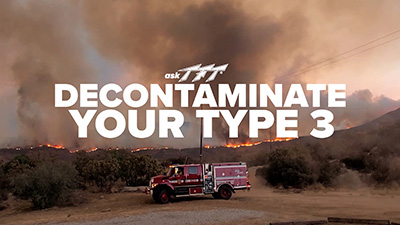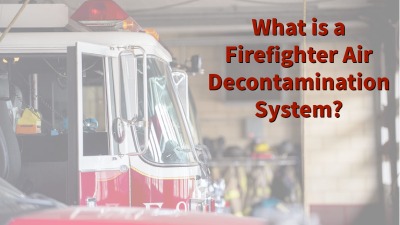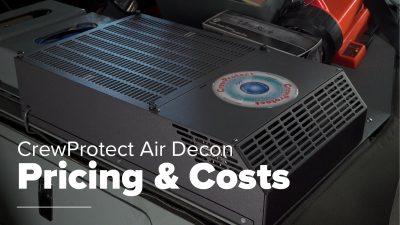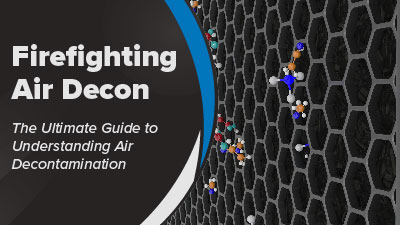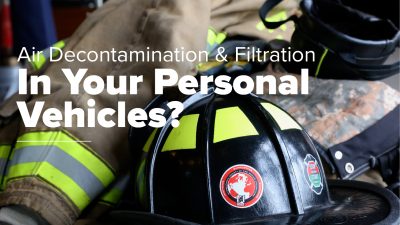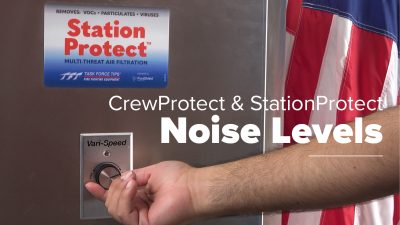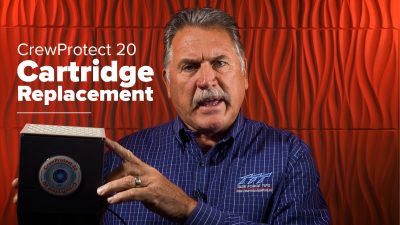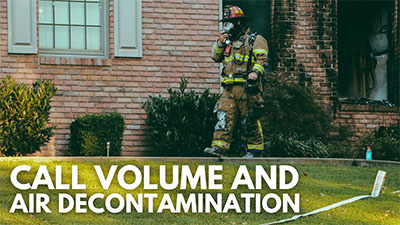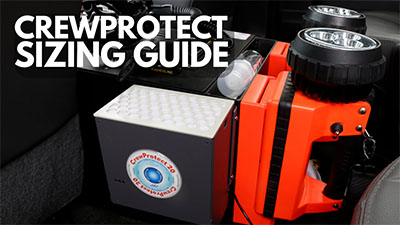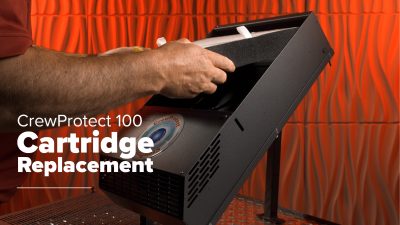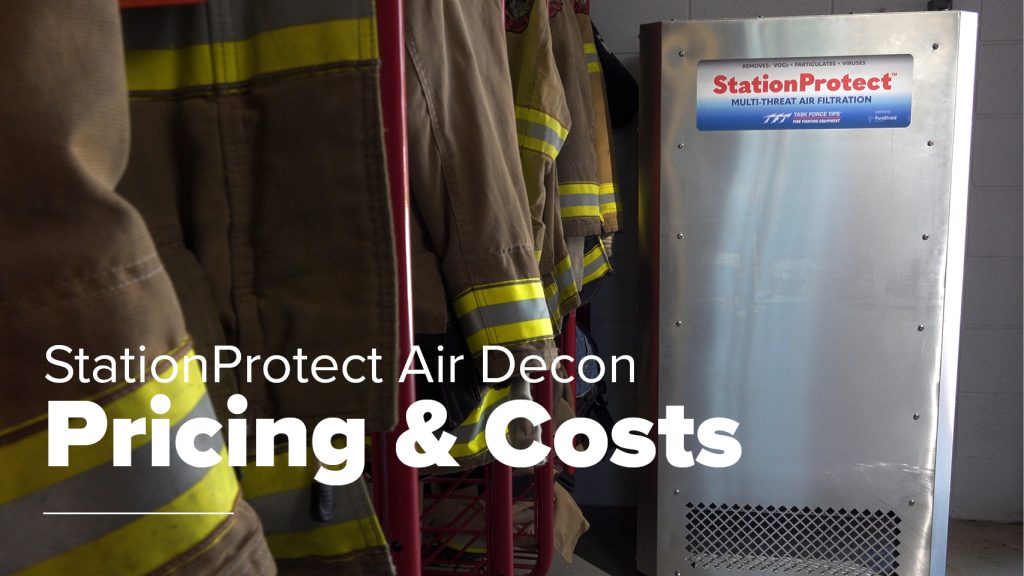Back
The Cost of Not Using Air Decontamination in the Fire Service
Posted on 1st October 2024
Air decontamination and air filtration in the fire service is a huge topic of conversation right now. As you do your research and discuss the costs of these systems, remember that there is a cost of NOT using air decontamination that needs to be considered.
In this article, we will explore some of those costs and how they impact you and your crew.
The Cost of Cancer Treatment
The CrewProtect and StationProtect units are intended to reduce and mitigate volatile organic compounds (VOCs) and particulates that threaten the health of you and your crew. These contaminants are known to cause cancers and other diseases.
According to data from the International Association of Firefighters (IAFF), cancer caused 66% of career firefighter line-of-duty deaths from 2002 to 2019. In 2016 alone, cancer caused 70% of line-of-duty deaths for career firefighters. The data shows that firefighters have a 9% higher risk of being diagnosed with cancer and a 14% higher risk of dying from cancer than the general U.S. population. These numbers are staggering and show that someone in your department may be affected by cancer during their service.
The costs of cancer treatment are also staggering and projected to rise over the next decade. According to research from the National Cancer Institute, total national costs of cancer treatment in the United States are projected to increase to $246 billion in 2030. Prescription drug costs are expected to increase by 40% in the same period. When you look at costs at an individual level, AARP says that the average cost of cancer treatment in 2018 was around $150,000.
So, how does this apply to you?
As an employer, a cancer or long-term illness diagnosis for someone on your crew could affect your workforce, overtime budgets, and insurance costs. Let’s look at some of those elements.
Your Workforce Costs
If a member of your crew receives a cancer diagnosis, they may be facing the realities of surgery, chemotherapy, radiation, and ongoing medication. They will likely need time off or away for recovery, doctors' appointments, follow-up visits, and added sick days as their immune system battles a devastating disease.
You will be tasked with covering those gaps in the workforce and dealing with lost productivity during that time. Many departments around the world are experiencing hiring shortages and difficulty filling their rosters, leading to overtime pay that often exceeds expectations or difficulty meeting the staffing needs of the fire ground. If a firefighter is sidelined due to illness or injury, these issues only become more extreme.
Career Department Overtime
Overtime costs depend upon the size of your department and your specific staffing issues. San Diego reportedly spent more than $46 million on overtime in 2018 and we all know that staffing has become more difficult due to COVID-19. Departments everywhere have struggled with soaring overtime costs due to staffing shortages and illness. If a member of your department cannot work, you may also face similar challenges as you cover their shifts while they undergo treatment or need extended time away.
Volunteer Shortages
Volunteer fire departments may not face overtime budgeting issues, but you know that any reduction in available firefighters creates difficulties. You may not have enough people respond to calls and may need additional mutual aid support from neighboring fire departments. Low staffing levels may also impact your ISO (Insurance Services Office) rating which has the potential to impact homeowner's insurance rates in the community you serve.
What can you do?
What if you could limit the particulates and VOCs that your crew inhaled due to off-gassing, exhaust, and mold -- potentially lowering their chances of a cancer or long-term illness diagnosis?
No system can guarantee to keep your crew from illness, and cancer or other diseases have genetic and lifestyle factors as well, but the data about a firefighter’s increased risk of cancer clearly shows a correlation. What would you do to lower their risk?
Cancer Treatment Costs for the Employer
As an employer, if a member of your crew receives a cancer or long-term illness diagnosis, you will likely see some of those costs yourself. Increases in the cost of insurance plus the need to pay for short or long-term disability become a reality. The costs of overtime, disability payments, and increasing insurance premiums are just a few ways you could save money in the long term by using air decontamination in your vehicle cabs and fire stations.
When you look past the money angle, there is also a large benefit for your crew.
Your Crew’s Costs
When a fellow firefighter is sidelined for any reason, the resulting needs for the department can take a toll on the whole crew. You may suddenly find yourself dealing with your crew’s mental health concerns, or burnout as they cover shifts. Let’s explore the implications of each.
The Mental Health of Your Firefighting Crew
It’s no secret that firefighters and first responders witness traumatic events and undergo a lot of stress on the job. A study of firefighters and police officers published in April 2018 showed that rates of PTSD and depression were up to five times higher among firefighters and police officers than they were among the general public. Mental health is already a major issue for the fire service.
When a member of your crew receives a long-term illness or cancer diagnosis, it affects your whole team. Firefighting brings your crew together like family and they often rely on each other. Diagnosis not only impacts the person with the illness but those who work with them. This can impact their mental health and work environment in unpredictable ways.
Burnout and Low Morale in Firefighting
Have you ever faced a moment when your crew was overworked, tired, and starting to distance themselves from the job? Did certain policies become a joke and conversation become negative more than positive?
Burnout is difficult for many organizations. According to a FirefighterNation.com article, 28% of employees report feeling burnt out at work very often or always. This means those individuals are unlikely to give it their all. Many factors contribute to burnout, but the long shifts and unpredictability of the fire service make burnout a very real possibility. When you add in extra shifts, sleep deprivation, mental and emotional strain, or mental health issues, the likelihood of burnout among your crew increases.
Low morale and burnout make your crew more likely to take sick days or begin looking for another job. These two issues can compound your retention, recruitment, and overtime budgeting concerns. But there’s another concern to think about – safety.
Burnout and Firefighter Safety
The U.S. Fire Administration posted a blog in 2018 summarizing the results of a study that examined the effects of firefighter burnout on workplace safety. The study found that firefighters suffering from burnout were less likely to voice their safety concerns, less likely to use PPE correctly, and less likely to perform their work in a safe routine manner. Each of these elements can lead to more accidents which would also affect your workforce, budgets, and benefits. In short, a crew with burnout is not as reliable or safe as they could be.
Conclusion
Let’s let this article sink in for a moment. Does it all seem a little far-fetched and dramatic? Maybe. But doing right by your crew is important. Getting an air decontamination system shows your crew a few different things:
- You value their health, now and tomorrow.
- You want your fire department and crew to run at their best.
- You value their family's health and well-being, mental and physical.
- You are proactive about making a safe and healthy workforce.
The up-front and ongoing costs of a reliable air decontamination system for your apparatus cabs and fire stations can be intimidating but consider the long-term costs of doing nothing. Health, safety, morale, and budgets can all be impacted when you choose to take action against air contamination.
